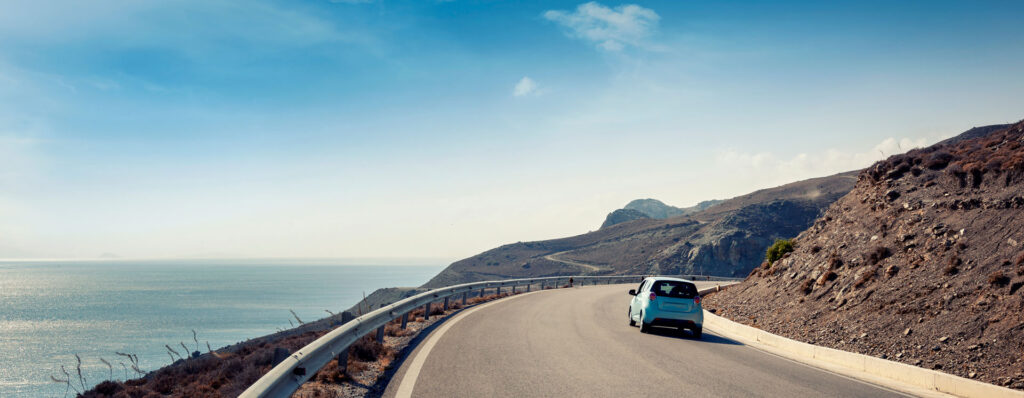
You’ve looked into a trip to Albania and you’ve decided doing a road trip is the best way – a great idea! A road trip in Albania is a great way to see the country and is one of the easiest ways of getting around given that public transport isn’t all that reliable all the time.
However, what is driving in Albania like? What do you need to know?
So here are our top tips and main things you must know before driving in this beautiful country.
We’ll begin with recommendations that are valid for everyone, whether you are renting a car in another Balkan country, hiring a car in Albania or bringing your own car.
DRIVING IN THE CITIES
Albanian cities are a relatively easy place to drive compared to a lot of the more ‘country roads’ in other areas (such as down to the southern Albanian Riviera or between places, such as Gjirokaster and Korce). However, there are some vital things you ought to know before drivng in Tirana or another city.
DRIVING OUTSIDE OF THE CITIES
Speed Limits are as follows:
50 km/h in towns (built-up areas)
80-90 km/h on rural/main roads
110 km/h on motorways
Most of the time, locals will entirely ignore these speed limits and generally go at whatever speed they feel like. You might end up with a local car right behind you, but remember that police will easily spot a rental car and are much more likely to fine you, so do keep to the speed limits.
There will also be other speed limit signs on roads, particularly on some of the winding mountain roads (e.g. 20km/h on tight corners).
GOOGLE MAPS VS GPS
Google Maps serves well 99% of the time.
If you aren’t planning on getting a local SIM (which we would 110% recommend getting, actually), then make sure to download the maps offline so you don’t end up stranded somewhere with no map and no internet.
You can purchase a Vodafone SIM card in Tirana airport on a ‘tourist plan’ which included 10GB of data plus minutes and texts for only 1300 lekë (around €11).
AVOID WHITE ROADS ON THE MAP
Yellow roads are great, white roads are bad mostly of the time. While yellow roads may be potholed and winding and mountainous, white roads are usually more than dirt tracks.
NO TOLLS ON HIGHWAYS
Tolls in Albania can only be found on the A1 Rruga e Kombit motorway, which runs west from the Kosovo border towards the capital Tirana. Charges are compulsory for all vehicle categories, including motorcycles. However, there is currently only one toll gate on the 130 km motorway located near the Kalimash tunnel, 34 km from the border with Kosovo.
The prices are incredibly cheap: only 5 euros for any car. It is possible to pay in cash, by credit card, or via the Digitalpass system with up to a 40%discount for regular users.
EASY RULES
All you need is an international driving permit, along with rental vehicle paperwork when driving. Keep your headlights always on, or you will get pulled over and get a ticket. In case of emergency, dial 112 from anywhere in Europe, and an operator will connect you to an emergency service in the country you are visiting. The operators can answer your call in their native language, English or French.
Drunk driving is strictly forbidden. Albania has a zero-tolerance for drunk driving. The blood alcohol content limit for drivers of private vehicles is 0.01%.
GAS STATIONS ARE EVERYWHERE
Gas stations are readily available around cities and villages in Albania. It will be easier to find them on the main highways as they’re marked with signs and panels.
Gas Stations in Albania usually are open and operate from 8:00 am until 12:00 pm in urban locations. They aren’t self-service. Be sure to have cash on hand as not all petrol stations accept credit cards.
YOU CAN FIND PARKING
Albanian parking laws are straightforward to understand. You need a ticket from a machine or an attendant to continue driving. There’s no limit on how long you can park as long as it isn’t causing problems with others around you, such as obstructing traffic or blocking pedestrians and people getting into/out of their homes.
Parking spaces may be metered or unmetered, just like elsewhere in Europe, and there will often be signs indicating what type they are.



